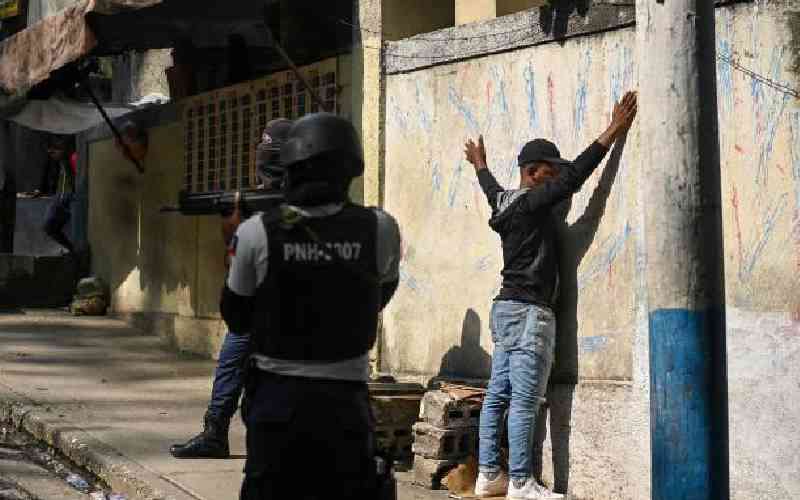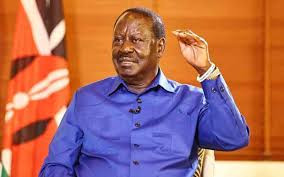By VINCENT MABATUK
Down a winding dirt track in a sleepy village west of Eldama Ravine town lies a unique old house that looks different from the dozens that surround it. This is where the founding President of Kenya Jomo Kenyatta took refuge in the wake of a Mau Mau crackdown in 1952.
“I am a proud peasant farmer, privileged to have lived in the same house where one of the most powerful men in this country slept,” says 54-year-old Moses Kerich, eliciting laughter from his fellow villagers as he leads them inside his compound.
The five-roomed, purely wooden store-like house, constructed in Arama Village, has a rich history that has not been told before; only villagers have great respect for it and its successive occupants.
The rumours
Days before the late former President was arrested and tried in a colonial court, elders from the Lembus community received him as he fled from the cruel hand of powerful colonial masters in parts of central Kenya. He addressed Mau Mau veterans while hiding in the expansive and thick Lembus forest.
“This house was built 89 years ago by a colonialist who was among white settlers in Ravine but when he left the country in the early 1940s, he left it to my father who was his porter,” says Kerich.
He says his father, Mzee Kiprop Kerich (now deceased) was friends with Kenyatta and when word went round that colonial intelligence was zeroing in on the village, he instructed the man who later became Kenya’s first president to hide inside a telephone booth-like room where he stayed for two days before elders declared the vicinity safe enough for him to be relocated.
“This small room you see here saved the founding president from the merciless hand of the colonialist who could not know of its existence,” says the younger Kerich pointing at a room that once served as an armoury for the white settler.
Mzee Kerich died in 1995, leaving behind his eighth born son to inherit the house. According to his son, their father worked as a Kenya African Union official and frequently communicated with Kenyatta.
State of Emergency
When the tension had cooled down and the surrounding atmosphere was declared safe by the elders, Mzee Kerich sneaked Kenyatta out of the village and drove 50km in his Bedford lorry to Maji Mazuri Railway Station where the then President-to-be caught a train to Central Province undetected.
“On arrival at his home, we understand Kenyatta was arrested and taken for trial at Kapenguria in 1953, for managing Mau Mau. This was after Sir Evelyn Baring, the newly appointed Governor of Kenya, had declared a state of emergency,” explains Lembus council of elders chairman Joseph Leboo.
The Mau Mau society was a radical anti-colonial movement engaged in civil rebellion. The accused were known as the ‘Kapenguria Six’ and included Mr Kenyatta, Kungu Karumba, Fred Kubai, Paul Ngei, Bildad Kaggia and Ramogi Achieng’ Oneko.
Mr Kerich has tried several times to renovate the building and replace the wooden roofs with iron sheets but the locals and Lembus elders have prevented him from succeeding. Leboo explains that the house is a rich part of Kenya’s heritage and as such should be preserved for future generations.
Stay informed. Subscribe to our newsletter
During our visit, villagers and neighbours familiar with the story braved the cold rainy evening to sneak their way into the once well-kept compound to hear the story once more.
“We are privileged that deep in this village unknown to many, Kenyatta escaped the colonialist’s handcuffs. We are part of history,” says Erick Ngeno, a resident.
However, the fine architectural handiwork now nears its sunset days as several sections of the building, among them a fireplace that once provided warmth for the settler on cold evenings, are falling apart.
Visiting leaders
Inside the house, everything from the roof, walls and floor, to several doors and windows are made of well-varnished and decorated wood with strong hinges.
“For your information, nothing needs be added or taken from the building. Everything you see belongs to the white settler,” says Mr Kerich pointing to a towering pit latrine situated along the fence.
Philip Ngetich, 62, narrates how Mau Mau war veterans sneaked into the expansive compound late in the evenings and early mornings for breakfast, supper and short briefs from visiting leaders before returning to the forest to continue agitating for self-governance.
“Some of them had long hair all over their bodies and the odour was repulsive because, I think, they had no time to bathe,” narrates Ngeno, adding that he was a young boy at the time.
Kenyatta was released from prison in 1961 and elected to the Legislative Council in 1962.
He became Prime Minister and then President and dedicated the remainder of his life to helping Kenya build itself up from the long and destructive independence movement.
Kenyatta died on August 22, 1978.
 The Standard Group Plc is a
multi-media organization with investments in media platforms spanning newspaper
print operations, television, radio broadcasting, digital and online services. The
Standard Group is recognized as a leading multi-media house in Kenya with a key
influence in matters of national and international interest.
The Standard Group Plc is a
multi-media organization with investments in media platforms spanning newspaper
print operations, television, radio broadcasting, digital and online services. The
Standard Group is recognized as a leading multi-media house in Kenya with a key
influence in matters of national and international interest.
 The Standard Group Plc is a
multi-media organization with investments in media platforms spanning newspaper
print operations, television, radio broadcasting, digital and online services. The
Standard Group is recognized as a leading multi-media house in Kenya with a key
influence in matters of national and international interest.
The Standard Group Plc is a
multi-media organization with investments in media platforms spanning newspaper
print operations, television, radio broadcasting, digital and online services. The
Standard Group is recognized as a leading multi-media house in Kenya with a key
influence in matters of national and international interest.








